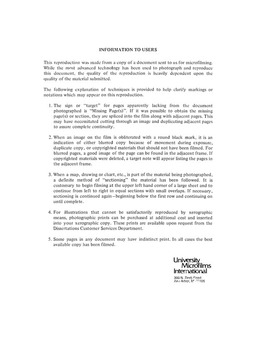| dc.contributor.author | Bagawandoss, Kesavalu M., | en_US |
| dc.date.accessioned | 2013-08-16T12:29:18Z | |
| dc.date.available | 2013-08-16T12:29:18Z | |
| dc.date.issued | 1984 | en_US |
| dc.identifier.uri | https://hdl.handle.net/11244/5302 | |
| dc.description.abstract | Sampling, sample preparation and analysis methods developed for the measurement of oil content yielded consistent results. The developed method was used to study the degradation of oil with time. The loss of oil ranged from 45 to 81% per year. First order empirical reaction rate constants were computed for the degradation of oil. The average rate constant was found to be 0.0088 day('-1). Fractionation of oil showed that all four fractions, asphaltenes, saturates, aromatics and polar compounds were degraded over time. Losses of fractions and first order rate constants were computed. No significant migration of oil was detected in the unsaturated zone. | en_US |
| dc.description.abstract | The above IQ program was used to characterize priority pollutants in the fate study. This priority pollutants study showed that pollutants degraded with time. Also, pollutants were formed in the soil matrix. Analyses of the concentrations showed variations due to the method of analysis as well as actual variations across the plot. No significant migration of priority pollutants was detected in the unsaturated zone. | en_US |
| dc.description.abstract | A computer program was written for the IQ program. The IQ program followed the criteria established by the EPA. The developed program was compared with that of McLafferty's and Biemann's methods of identification and quantification. The IQ method was found to be faster than, and as reliable as, McLafferty's and Biemann's methods. | en_US |
| dc.description.abstract | The objectives of this study were to develop an identification and quantification technique, the IQ program, for the analysis of priority pollutants; study the fate of priority pollutants present in oil refinery sludges; develop methods for sampling, sample preparation and analysis of oil content; and study the disappearance of oil fractions. The above study was performed using a ten acre tract of land owned by the University of Oklahoma. | en_US |
| dc.format.extent | xiii, 117 leaves : | en_US |
| dc.subject | Environmental Sciences. | en_US |
| dc.title | Land treatment of oil refinery sludges : | en_US |
| dc.type | Thesis | en_US |
| dc.thesis.degree | Ph.D. | en_US |
| dc.thesis.degreeDiscipline | School of Civil Engineering and Environmental Science | en_US |
| dc.note | Source: Dissertation Abstracts International, Volume: 45-12, Section: B, page: 3759. | en_US |
| ou.identifier | (UMI)AAI8504318 | en_US |
| ou.group | College of Engineering::School of Civil Engineering and Environmental Science | |
